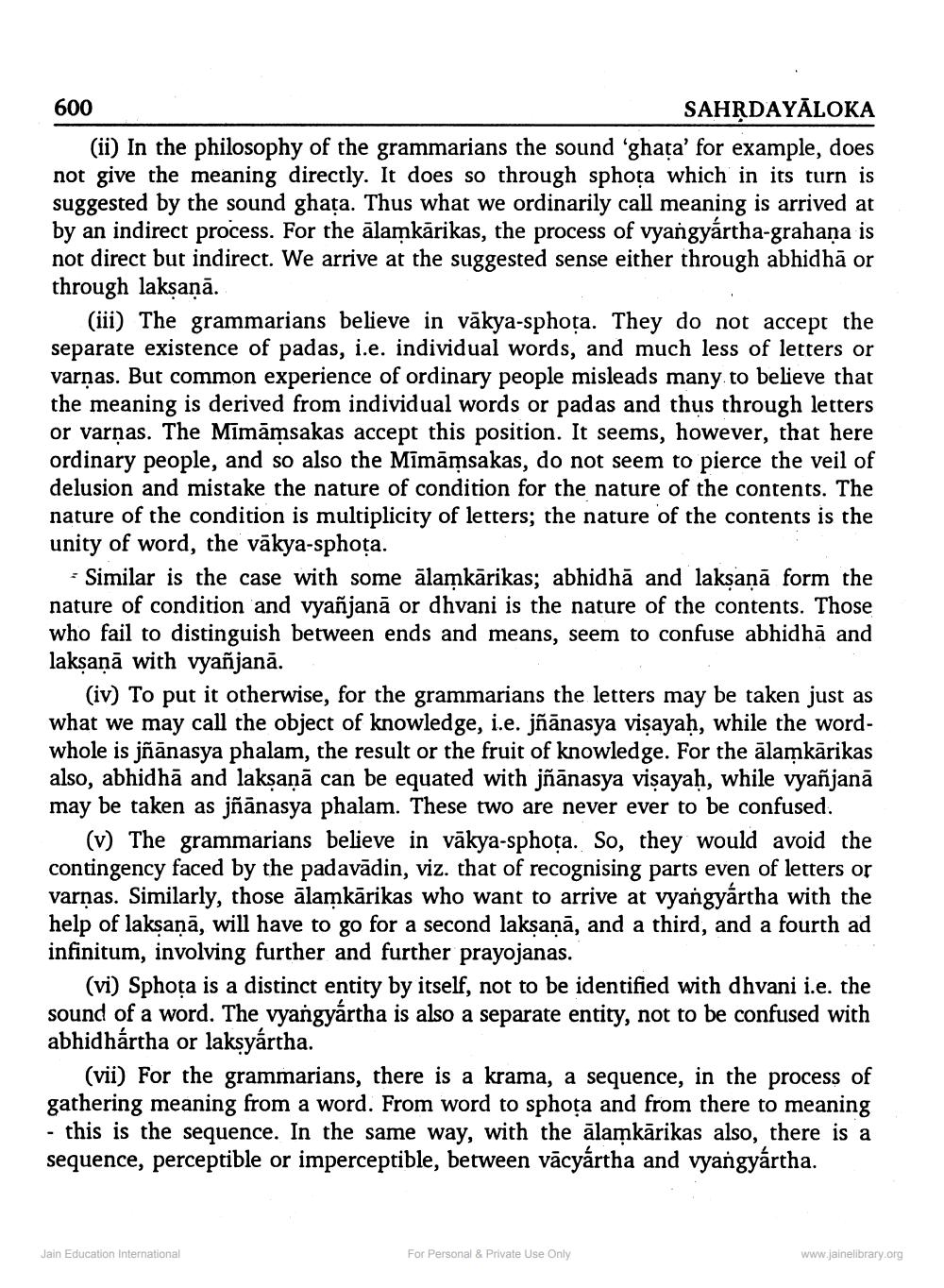________________
600
SAHŞDAYĀLOKA (ii) In the philosophy of the grammarians the sound 'ghata’ for example, does not give the meaning directly. It does so through sphoța which in its turn is suggested by the sound ghata. Thus what we ordinarily call meaning is arrived at by an indirect process. For the ālamkārikas, the process of vyangyártha-grahana is not direct but indirect. We arrive at the suggested sense either through abhidhā or through laksaņā.
(iii) The grammarians believe in vākya-sphota. They do not accept the separate existence of padas, i.e. individual words, and much less of letters or varnas. But common experience of ordinary people misleads many to believe that the meaning is derived from individual words or padas and thus through letters or varņas. The Mimāmsakas accept this position. It seems, however, that here ordinary people, and so also the Mīmāmsakas, do not seem to pierce the veil of delusion and mistake the nature of condition for the nature of the contents. The nature of the condition is multiplicity of letters; the nature of the contents is the unity of word, the vākya-sphoța.
- Similar is the case with some ālamkārikas; abhidhā and laksaņā form the nature of condition and vyañjanā or dhvani is the nature of the contents. Those who fail to distinguish between ends and means, seem to confuse abhidh, and laksaņā with vyañjanā.
(iv) To put it otherwise, for the grammarians the letters may be taken just as what we may call the object of knowledge, i.e. jñānasya visayaḥ, while the wordwhole is jñānasya phalam, the result or the fruit of knowledge. For the ālamkārikas also, abhidh, and laksana can be equated with jnanasya visayah, while vyanjana may be taken as jñānasya phalam. These two are never ever to be confused.
(v) The grammarians believe in vākya-sphoța. So, they would avoid the contingency faced by the padavādin, viz. that of recognising parts even of letters or varnas. Similarly, those ālamkārikas who want to arrive at vyangyártha with the help of laksanā, will have to go for a second laksanā, and a third, and a fourth ad infinitum, involving further and further prayojanas.
(vi) Sphoța is a distinct entity by itself, not to be identified with dhvani i.e. the sound of a word. The vyangyártha is also a separate entity, not to be confused with abhidhártha or laksyártha.
(vii) For the grammarians, there is a krama, a sequence, in the process of gathering meaning from a word. From word to sphoța and from there to meaning - this is the sequence. In the same way, with the alamkārikas also, there is a sequence, perceptible or imperceptible, between vācyártha and vyangyártha.
Jain Education International
For Personal & Private Use Only
www.jainelibrary.org




